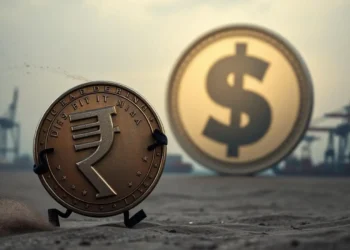According to a report in ET Auto, United Nations, “India’s recovery is on a solid path”, the UN said on Thursday reporting that the country recorded the highest estimated growth rate among the major economies last year and is set to be on the same trajectory during this year and the next.
The UN’s annual World Economic Situation and Prospects (WESP) report estimated the growth rate of India’s gross domestic product (GDP) at 9 % last year and forecast it to moderate to 6.7 % this year and 6.1 % next year but still retain the highest growth rates among the large economies.
In 2020, the year Covid-19 pandemic struck the world, India’s economy had shrunk by 7.1 % – a negative growth rate – according to the report.
China, which came next among the large economies, was estimated to have grown by 7.8 % last year and forecast to grow by 5.2 % this year and 5.5 % next year.
Indian Economic Recovery
Overall, the global economy’s growth was estimated to be 5.5 % last year, bouncing back from a shrinkage of 3.4 % in 2020.
The growth projections are 4 % this year and 3.5 % in 2023.
The report said: “India’s economic recovery is on a solid path, amid rapid vaccination progress, less stringent social restrictions and still supportive fiscal and monetary stances.”
The WESP raised India’s growth estimate for last year by 1.7 % and the growth projection for this year by 0.8 % from the expectations in its report a year ago.
It ascribed slowing down of growth from 9 % last year to 6.7 % this year to waning base effects.
While “robust export growth and public investments underpin economic activity”, the WESP warned that “high oil prices and coal shortages could put the brakes on economic activity in the near term”.
“It will remain crucial to encourage private investment to support inclusive growth beyond the recovery,” it advised.
“Inflation is expected to decelerate throughout 2022, continuing a trend observed since the second half of 2021 when relatively restrained food prices compensated for higher oil prices,” the report said while attaching a note of caution: “A sudden and renewed rise in food inflation, however, due to unpredictable weather, broader supply disruptions and higher agricultural prices, could undermine food security, reduce real incomes and increase hunger across South Asia) region.”
World Economy
The report estimated India’s consumer price inflation at 5.9 % last year and is projected to go down to 5.6 % this year and 5.3 % next year.
The WESP said that it expected the Reserve Bank to raise interest rates throughout this year.
In its snapshot of the world economy, the report said: “The global economic recovery is facing significant headwinds amid new waves of Covid-19 infections, persistent labour market challenges, lingering supply-chain challenges and rising inflationary pressures.”
“The momentum for growth – especially in China, the United States and the European Union – slowed considerably by the end of 2021, as the effects of monetary and fiscal stimuli began to recede and major supply-chain disruptions emerged,” according to the report.
Assessing the scenario in the report, Secretary-General Antonio Guterres said: “In this fragile and uneven period of global recovery, the World Economic Situation and Prospects 2022 calls for better targeted and coordinated policy and financial measures at the national and international levels.”
The 46 countries classified as the least developed are estimated to grow by only 1.4 % this year, according to the WESP.
“The time is now to close the inequality gaps within and among countries. If we work in solidarity – as one human family – we can make 2022 a true year of recovery for people and economies alike,” Guterres said.
The WESP painted a mixed picture for South Asia.
GDP Growth
“Amid sound macroeconomic policies, Bangladesh has navigated the Covid-19 pandemic relatively well” and its “GDP is projected to expand by 6 % in 2022”, the report said.
Its “economic activity rides on export growth and the rising demand for apparel, robust remittance inflows, and accommodative fiscal and monetary policies”, it added.
Pakistan’s economy after an economic expansion of 4.5 % in 2021, is projected to grow by 3.9 % in 2022 “driven by private consumption, record-high remittances and fiscal support”, according to the report.
But for Sri Lanka, the WESP projected a GDP growth of 2.6 % for this year and said that “its major challenges include food shortages, dwindling foreign reserves and sovereign debt risks”.
Among the developed countries, the UK was projected to be the top performer with a 4.5 % GDP growth this year, after a 6.2 % estimated growth last year.
The European Union’ growth was estimated at 4.7 % last year and projected to be 3.9 % this year.
For the United States, the report estimated the growth at 5.5 % last year and projected it to be 3.5 % this year.
While the WESP used the calendar year calculations for the report to enable comparisons between countries, it also gave this growth picture for India on a fiscal year basis – 2020-2021: -(minus)10.6 %; 2021-22: 8.4 %; 2022-223: 6.5 %, and 2023-24: 5.9 %. (ET Auto)















